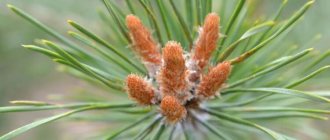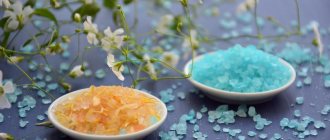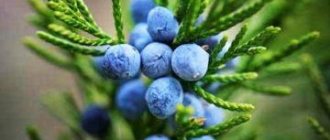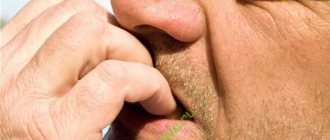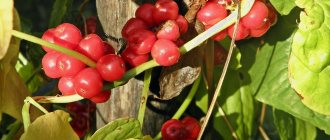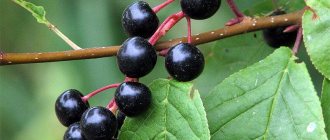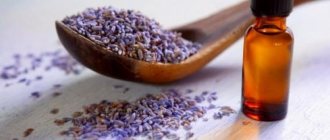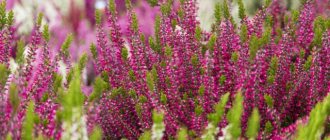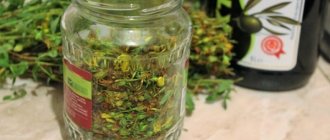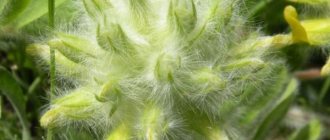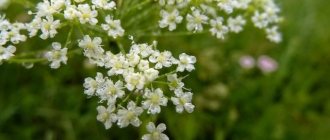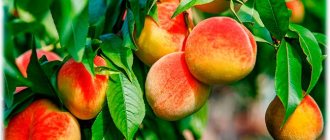Other names of Indian onions are tailed poultry onion, sea onion, Chinese, false, Mongolian, brandushka, hellish root. In England, onions are called the Star of Bethlehem, in Germany - the milk star, in Israel - the milk of the hawk.
Indian onion has many beneficial properties
Indian onion
The root part of the onion is located on the surface of the soil
general characteristics
Indian onion is an exotic vegetable that is widespread in South Africa, India, China, the Mediterranean regions, and the European continents (central part, southeast). Onions appeared in the CIS countries after the 50s of the last century.
Birdwort belongs to a perennial plant of the Liliaceae family, and is a distant relative of lily of the valley and other flowers. In terms of external characteristics, it resembles Kalanchoe, aloe and similar plants, which is why brandushka is often confused with indoor flowers.
It has a lot of useful properties, which is why it is popular in folk medicine and cosmetology. All parts of the onion are used to prepare tinctures.
Indian onions are easy to care for, live up to 30 years, do not require much light, heat and humidity, and grow outdoors and in residential areas. Age is determined by the number of leaves - a new element appears during the growing season.
Indian onions are used with extreme caution, as they contain milky juice (whitish in color), which causes severe burns. For this reason, fresh liquid and prepared products are taken in strict accordance with the indicated dosages.
Description of the plant
The peculiarity of the Indian onion is the location of the root part on the surface of the soil, due to which the plant differs from other varieties. External indicators have their own characteristics:
- The root consists of numerous white cord-like roots that are connected to the bulbous part.
- The bulb has a light green tint, white compacted scales that firmly adhere to the bulb with a diameter of up to 10 cm. The husk is white-brown.
- The foliage originates near the root, has a width of 3-5 cm, a length of 30-100 cm. The leaf plate is entirely linear, with a white vein running through its middle part. As the leaves grow, they break off in the middle due to their own weight. The ends tend to curl.
- The fruits are small boxes containing seed material - black shiny and flattened grains.
- The flowers are white, interspersed with green veins. Their maximum size is 10 mm, the arrangement of racemose inflorescences is a fleshy peduncle. The flowering process begins from the bottom, the shape resembles small stars. Feature - the first flowers appear after 2-3 years.
- The length of the flower arrow is about 1 m.
- Children are formed in the bulb, after which they fall to the surface of the soil and take root.
Composition and properties of Indian onion
Indian onion consists of biologically active and beneficial substances that have a healing effect on the body. What's included:
- essential oil;
- alkaloids – colchicosides, thiocolchicines, colchicines;
- glycosides;
- organic acids;
- antioxidant quercetin;
- microelements;
- macroelements.
Thanks to these compounds, Indian onion has the following effects:
- relieves pain;
- eliminates inflammatory processes;
- suppresses pathogenic microbes;
- dilates capillaries and blood vessels;
- accelerates peripheral blood circulation;
- prevents the formation of blood clots by thinning the blood;
- destroys parasites and viruses;
- regenerates damaged tissues and cells;
- has keratolytic, antitumor, antigout properties;
- warms;
- strengthens the walls of blood vessels.
Official medicine does not recognize Indian onion as a medicinal product for oral use, but is not skeptical about gels based on brandushka and hot pepper, since the plant warms and irritates the receptors in the joints, which leads to a decrease in inflammation.
Areas of application
Indian onions are included in the group of poultry plants that are strictly prohibited for consumption. However, the tailed variety is an exception - it can be used for frying, pickling, baking and fresh consumption. Hell's root has found application in cosmetology - alcohol tinctures, lotions, tonics, decoctions for the face and hair are made from it.
The most popular Indian onion is used in folk medicine. Tinctures, ointments and other medicinal products are made from it for the following pathological conditions:
- Immune system disorders – dermatitis, seborrhea, eczema, psoriasis, allergic reaction.
- Diseases of the mouth and throat - herpes, periodontal disease, stomatitis, sore throat, gingivitis.
- Skin injuries, insect bites, burns, frostbite.
- Fungal infection.
- Purulent boils, pimples, papillomas, wen, warts, dropsy, tumors on the skin.
- Muscular diseases - arthritis, arthrosis, myalgia, osteochondrosis, pinched nerves, gout.
- Pain in teeth and head.
- Cold.
- Mastitis.
- Phlebeurysm.
- Hematomas, fractures.
Traditional healers recommend using Indian onions for weight loss and eliminating cellulite, and externally. To do this, pure plant juice is diluted in a ratio of 1:10 with plant-based oil and rubbed daily into the skin of the problem area.
Use in folk medicine with recipes
In folk medicine, treatment with Indian onions is carried out in cases of various diseases according to the following recipes:
Fungal diseases
Ointment recipe: Indian onion leaf juice is mixed with petroleum jelly in a ratio of 1: 3. The petroleum jelly must first be heated in a water bath for better mixing. The shelf life of the prepared ointment should not exceed one week . The affected areas on the skin and nails are smeared with the prepared mixture and covered with a bandage.
Joint pain
- Alcohol tincture. Finely chop and crush the Indian onion leaves. Mix with alcohol in a ratio of 10: 1. The resulting mixture is infused in a dark place for two weeks. The product is used as a rubbing. Before starting rubbing, you must wear protective gloves. The procedure requires at least ten minutes. It is accompanied by tingling and some burning.
This remedy works like store-bought remedies for joint pain. The effect is achieved by stimulating blood circulation in tissues and penetration of active substances through the skin.
Before starting the procedure, it is necessary to conduct a test for susceptibility to the drug. To do this, treat a small area of skin. If irritation does not appear within two hours, the product can be safely used.
- Mix equal amounts of pureed Indian onion and plantain leaves with Vaseline. The shelf life and area of application are the same as for the first version of the ointment.
Sinusitis and inflammation of the nasopharynx
Preparation of an aqueous solution
Juice and warm water are mixed in a ratio of 1: 3. The maxillary sinuses are washed once a day, even if there is no puncture. Active substances are able to penetrate through the membranes of the sinuses directly into the inflamed cavities. A swab dipped in this solution is used to wipe the inner surfaces of the nasopharynx and throat for sore throat.
Hair growth stimulation
- Solution for therapeutic compress. The proportions for mixing Indian onion juice and water are 1: 3. Soak the scalp with the resulting product and wrap it in film. Be sure to wrap the top with a towel or warm diaper. This is done to create a greenhouse effect that enhances the effect of the medicinal mixture. The duration of the procedure does not exceed 40 minutes.
- Infusion for rinsing hair. 100 grams of ground Indian onion are mixed with a liter of boiling water and simmered in a water bath for 15 minutes. The mixture continues to infuse for three days. The resulting product is used to rinse hair after washing. This restores the collagen content in the hair and stimulates increased growth.
How to plant and grow Indian onions at home?
Indian onion is a perennial plant that does not tolerate cold, so it is impossible to grow it only in garden beds. Therefore, stock up on large pots (the root of an adult crop reaches 1 m) for replanting for the winter. Brandushka is planted in different ways depending on the type of reproduction.
Seed material
The main condition is pollinated seeds, which can be collected independently in spring or summer. How to sow them:
- First, prepare the planting material - keep it in the refrigerator for 4-5 months. Place the grains in a piece of gauze and place them on a shelf in the refrigerator.
- Take a container with holes in the bottom so that the liquid does not stagnate when watering.
- Place pebbles (pebbles) on the bottom and fertile soil on top (you can buy a universal substrate or mix perlite and peat in equal proportions).
- Sow the seeds at a distance of 1-3 cm from each other, 1 cm deep into the soil.
- Moisten the soil.
- Over the course of 6-7 months, sprouts form. During this period, properly care for the planting material. Water as the soil dries out, monitor the temperature (+15-22 degrees).
- When the first 3 leaves appear, dive into separate containers filled with the following composition - 2 parts river sand, 1 part each turf and leaf soil.
Bulbs
To obtain individual bulbs, an adult onion must be divided into parts. Landing method:
- prepare pots from natural materials (clay, peat);
- pour expanded clay onto the bottom;
- add a substrate of sand, leaf and turf soil;
- make a hole;
- deepen the bulb;
- sprinkle with soil;
- moisturize.
Sprouts
The babies are collected after the Indian onion has finished flowering. The landing method is identical to the previous one. Root formation period is 14-16 days.
Do not forget that onions grow quite quickly, and the root system develops long. Therefore, periodically plant the bulbs in large pots. Do this with confidence, as the root is durable and can easily withstand replanting.
Rules of care
When growing Indian bulbous crops, follow the basic rules of care:
- Onions love light, but cannot withstand direct sunlight. If you grow it on a windowsill (or in winter), do not place it on the sunny side during the daytime - it is better to provide the plant with artificial lighting (phytolamps, fluorescent devices, etc.).
- The humidity of the room should not exceed 75-80%, but dry air also harms the plant. To prevent this, spray your feathers with warm water 2-4 times a week. If the onion is located near heating devices that dry out the air, spraying is carried out more often.
- The temperature in summer is a maximum of 20-22 degrees, in winter - a minimum of +10-12. The optimal temperature is room temperature.
- Indian onions are not afraid of drought - they are destroyed by high soil moisture, so there is no need to worry too much about watering time. To accurately determine the moistening period, inspect the top layer of soil - it should not be wet or severely cracked (a light dry crust is acceptable).
- Water for irrigation must be rain or settled. You cannot water from a water supply, as such liquid contains many substances harmful to the plant (chlorine and the like). The water must be left in an open container. The temperature of the liquid should be close to room temperature.
- It is necessary to loosen the soil, since without oxygen the root system stops development, as a result of which the crop dies. This must be done carefully so as not to catch the roots.
- To ensure proper gas exchange and photosynthesis, remove dust from the feather part using a soft cloth or special devices.
- The soil in pots quickly loses its beneficial properties, so Indian onions must be fed with organic matter and minerals. Brandushka's favorite fertilizer is wood ash (10%), which is diluted with water. Feeding frequency: every 2 weeks. You can add potassium permanganate in a weak solution. The best option is complex fertilizers purchased at a specialized store.
Planting in open ground
The minimum temperature at which Indian onions develop is +10 degrees, which obliges gardeners to move the plant to a warm room in the winter. Brandushka easily adapts to new conditions, so it is not afraid of picking and transplanting.
Features of planting in the garden:
- Bulbs should be brought into open ground at a consistently warm temperature: for the middle regions of Russia this is mid-to-late May.
- The place should be shaded, as the variety does not tolerate exposure to direct sunlight. However, there should be a lot of light.
- Watering should be moderate - waterlogging should not be allowed.
- Before planting in the soil, onions can be cultivated all winter, but there is a way to allow them to rest. To do this in the fall, place the pot away from light and stop watering completely (spray only occasionally with a spray bottle). Moisture is restored immediately after transplanting to the garden.
- There is no point in fertilizing the soil - onions are unpretentious. The only requirement is moderate acidity.
You can not replant the crop at all for the summer period, but simply take it outside in a pot, but this will not contribute to rapid growth. Why is it advisable to transplant Indian onions into garden beds:
- there is no need to apply fertilizers frequently - it is enough to use organic matter once a month;
- feather development accelerates;
- natural pollination occurs, due to which the number of seeds and children increases;
- The plant blooms more abundantly and longer.
Transplant process:
- carefully remove the root system from the pot;
- prepare the bed - dig a hole along the length of the root (depending on age);
- moisten the ground;
- insert the bulbs at a distance of 2-5 cm from each other;
- sprinkle with soil, compact, water.
Indications for use
The benefits of the plant make it possible to use home remedies based on it to treat many pathological conditions. In the old days it was considered a cure for 100 diseases. In alternative medical practice, poultry is used for the following diseases:
- Colds and viral diseases accompanied by inflammatory processes of the mucous membranes of the nasal passages, mouth, throat: sore throat, tonsillitis, laryngitis, runny nose of various etiologies.
- Nervous system disorders: frequent headaches, migraines, memory loss and concentration, insomnia.
- Hemorrhoids of varying severity.
- Dermatological diseases of an inflammatory nature: boils, ulcers, abscesses, eczema.
- Irritation and inflammation of the skin after insect bites.
- Malignant neoplasms caused by the human papillomavirus.
- Vascular pathologies: atherosclerosis, varicose veins, thrombophlebitis and swelling of the legs due to these disorders.
- Multiple warts.
- Fungal diseases of the upper and lower extremities.
- Dental pathologies accompanied by severe pain.
- Diseases associated with metabolic disorders: diabetes mellitus.
- The antiseptic and antimicrobial properties of poultry are used to treat long-term non-healing wounds.
Growing potatoes with seeds in open ground
However, the treatment of joints with Indian onions has gained the greatest popularity. Traditional healers claim that it copes with gout, osteochondrosis, radiculitis, rheumatoid arthritis, arthrosis, and muscle pain. An effective remedy for acute and chronic forms of diseases.
Reproduction methods
Indian onions are easily and quickly propagated at home. In addition, there are three ways to do this:
- Onion method. Small bulbs are used and planted in pots.
- Seeds. Requires patience and diligence, as planting material takes several months to germinate. A peculiarity is that seeds are formed from bulbs pollinated by insects, so the plants are first taken out into the fresh air in the summer (in the absence of pollinating insects, the process is eliminated). If there is no possibility of transplanting into the ground, you can pollinate the crop artificially.
- Children. The most common and convenient way. The children themselves are released from the bulbs as they grow. They just need to be collected and planted according to the requirements.
